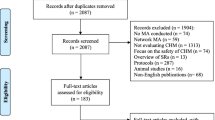Abstract
Chinese herbal medicine has recently become a hot research field internationally; an increasing number of pharmaceutical researchers and scientists have dedicated themselves to such research work. Based on papers in the American Journal of Chinese Medicine from 2002 to 2004, 60% of papers published in the journal were sponsored by different institutions in the authors’ countries. This fact indicates that researchers receive sponsorship for their work, and sponsors should pay more attention on the control of the researchers to use financial support more efficiency. This study applied Analytic Hierarchy Process, AHP to evaluating the performance of sponsored Chinese herbal medicine research, and this method can help sponsors weight evaluation elements without having to change the system of every category of research. To explain the process and application of AHP, a Taiwanese case study is presented. The analytical results presented in this study, provide a reference for institutes supporting research on Chinese Herbal Medicine.
Similar content being viewed by others
References
Geisler, E. (1996), Integrated figure of merit of public sector research evaluation, Scientometrics, 36:379–395.
Goh, C. H. (1997), Analytic hierarchy process for robot selection, Journal of Manufacturing Systems, 16:381–386.
Kostoff, R. N. (1994), Assessing research impact: Federal peer review practices, Evaluation Review, 18:31–40.
Kostoff, R. N. (1995), Federal research impact assessment: Axioms, approaches, applications, Scientometrics, 34:163–206.
Lin, C. T., Hsu, P. F. (2001), Selection of advertising agencies using grey relational analysis and Analytic Hierarchy Process, Journal of International Marketing and Marketing Research, 26:115–128.
Link, A. N. (1996), Economic performance measures for evaluating government-sponsored research, Scientometrics, 36:325–342.
Martin, B. R. (1996), The use of multiple indicators in the assessment of basic research, Scientometrics, 36:343–362.
Melkers, J., Rossener, D. (1997), Politics and the political setting as an influence on evaluation activities: National research and technology policy programs in the United States and Canada, Evaluation and Program Planning, 20:57–75.
Satty, T. L. (1997), A scaling method for priorities in hierarchical structures, Journal of Mathematical Psychology, 15:274–281.
Satty, T. L. (1990), The Analytic Hierarchy Process. 2nd edition, RWS Publications, New York.
The Executive Yuan of the Republic of China (1999), Management of commissioned research project.
Author information
Authors and Affiliations
Corresponding author
Rights and permissions
About this article
Cite this article
Lin, Ct., Chiang, Ct. Evaluating the performance of sponsored Chinese herbal medicine research. Scientometrics 70, 67–84 (2007). https://doi.org/10.1007/s11192-007-0105-9
Received:
Issue Date:
DOI: https://doi.org/10.1007/s11192-007-0105-9




